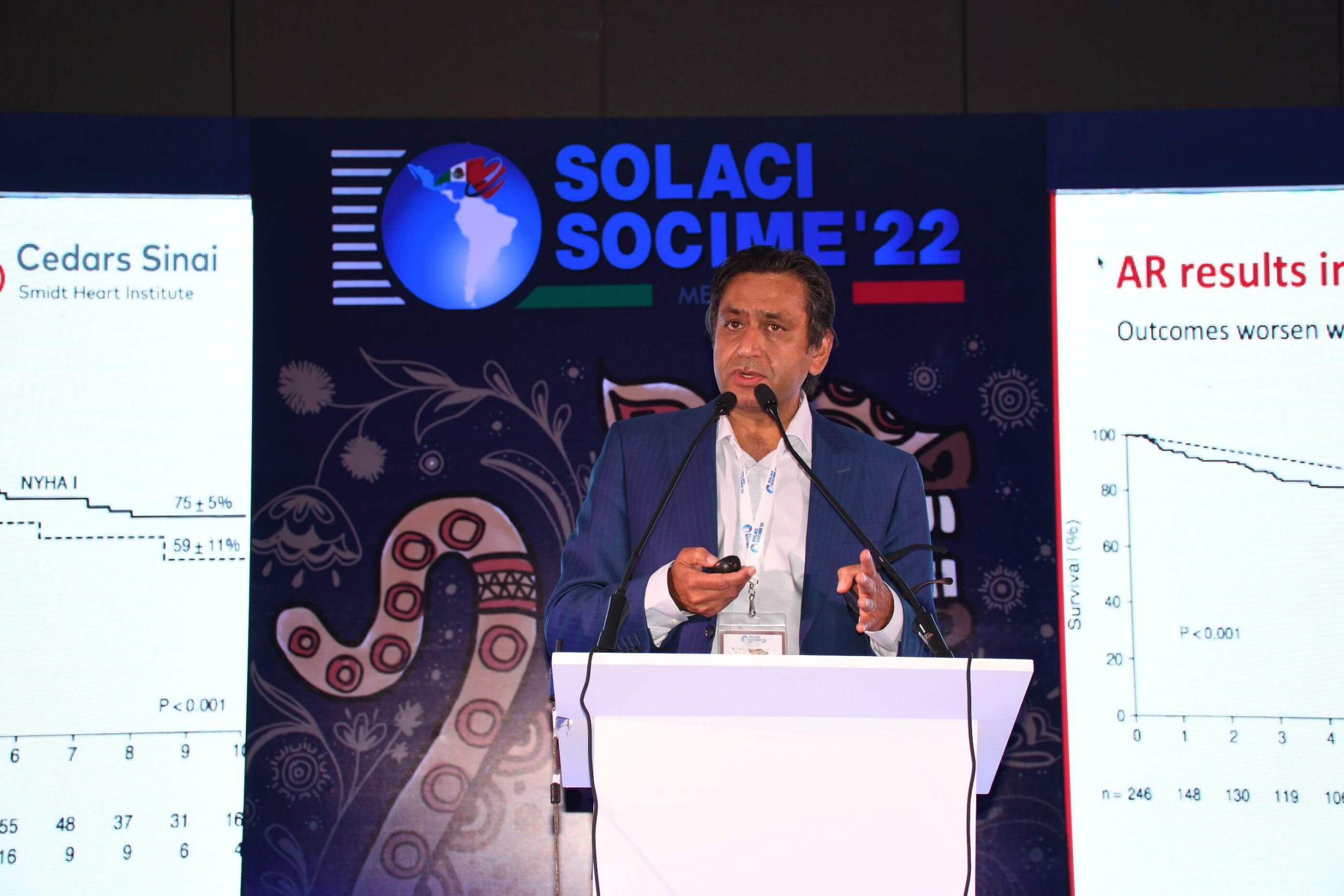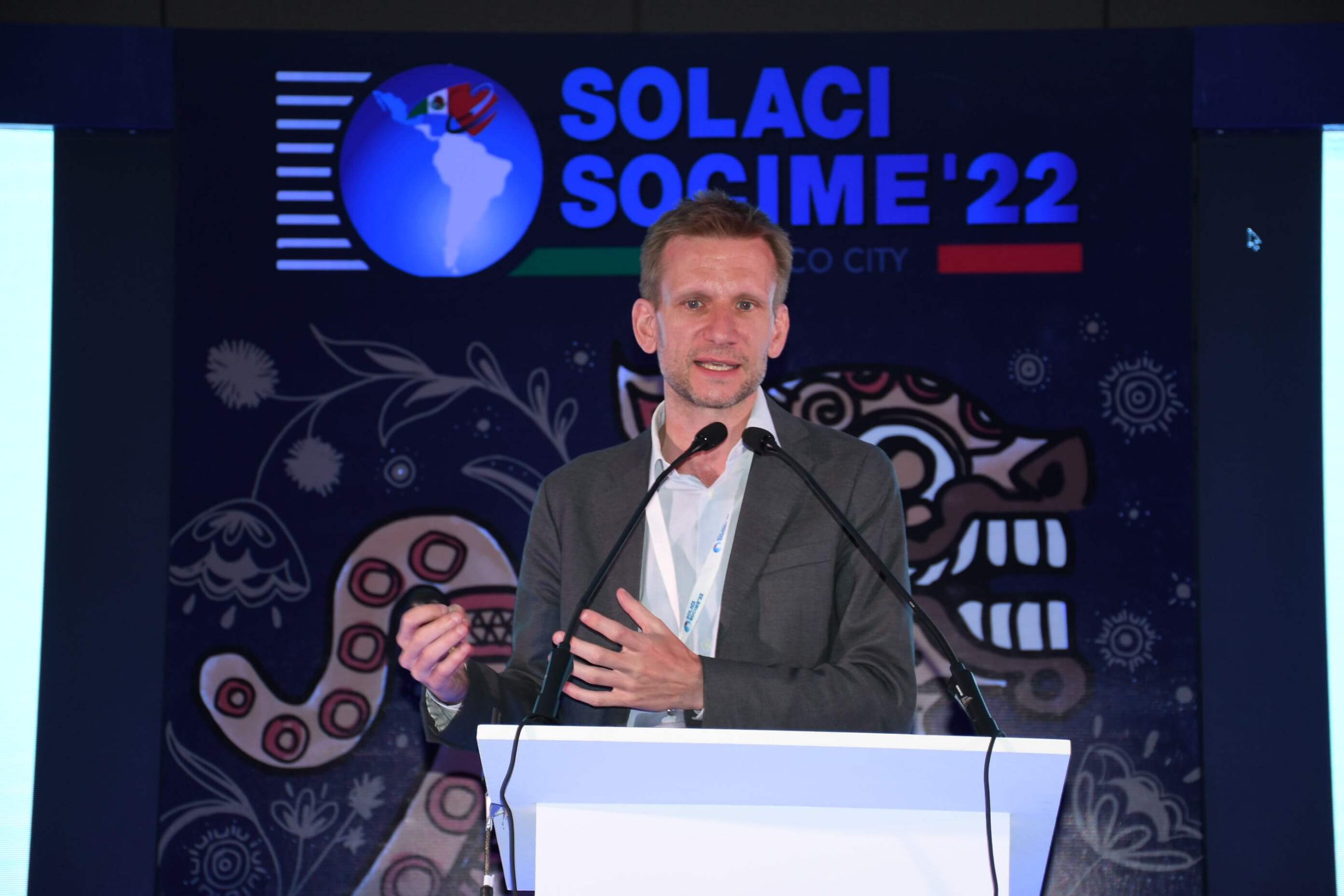On the last session from day 1 of SOLACI-SOCIME 2022 on structural pathology, Dr. Raj Makkar, an international expert on the subject, talked about transcatheter aortic valve replacement (TAVR) in pure aortic regurgitation (AR), which presents several implantation challenges, such as insufficient anchoring, embolization, residual regurgitation, ring rupture, etc.
As opposed to patients with aortic stenosis, patients with AR had a higher migration index, more transcatheter reintervention, and greater surgical reintervention.
Additionally, only 25% of patients with severe AR are treated in the US, which shows us that this is an undertreated population. While using devices developed for aortic stenosis is accepted, they are off-label for AR, as they are not ideal for its anatomy, which opens up an opportunity to test specific devices.

Later, Dr. Ole De Backer (DEN) addressed the clinical implications of imaging findings, such as reduced leaflet motion or their hypoattenuation (HALT).
Through tomographic studies with adequate follow-up, these issues might not impact transvalvular gradient, thromboembolic events, or mortality. The only affected parameter was eventual long term durability (hypothesis).
He discouraged the systematic search for this problem; it should only be suspected in patients with a mean gradient >10 mmHg, early degeneration, or a neurological event unrelated to another cause.


Dr. Omar Tupayachi.
Member of the Editorial Board of SOLACI.org.
Subscribe to our weekly newsletter
Get the latest scientific articles on interventional cardiology





